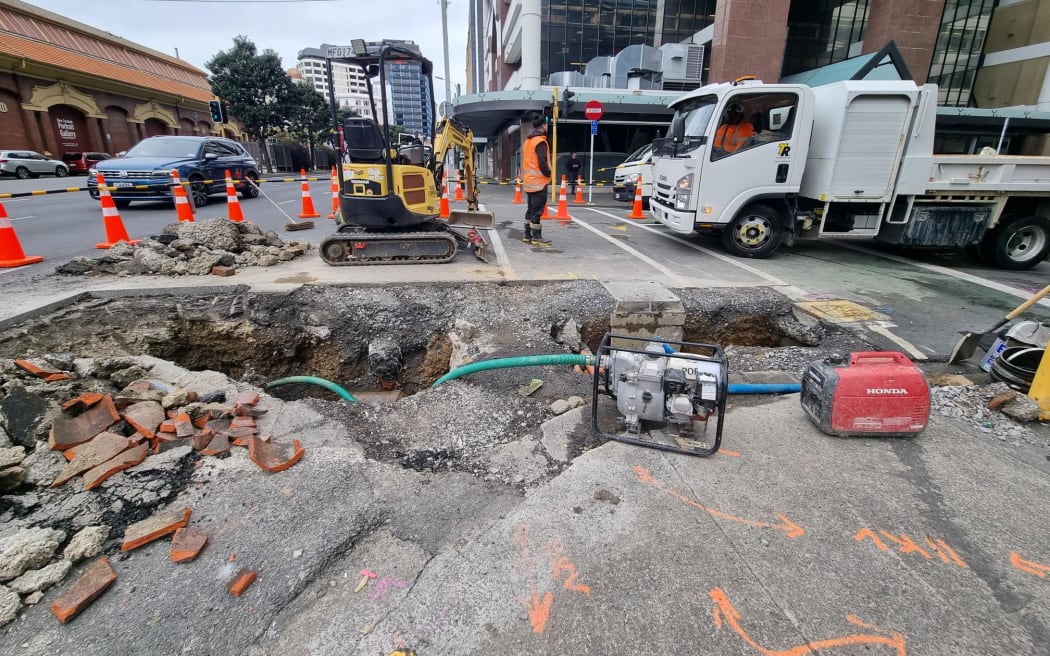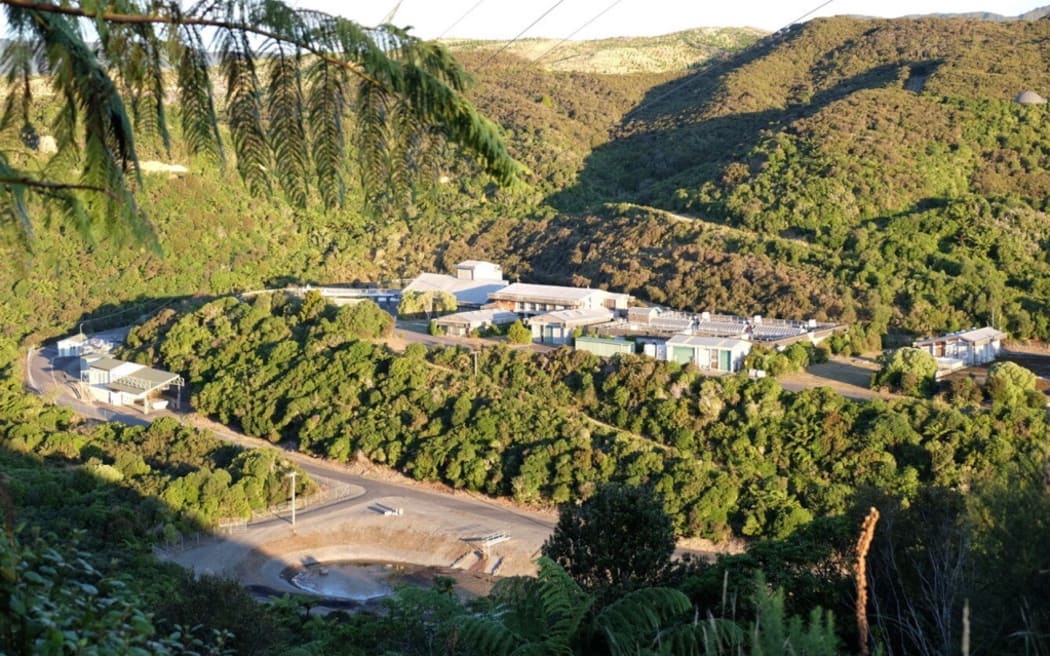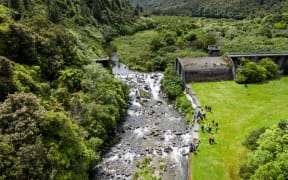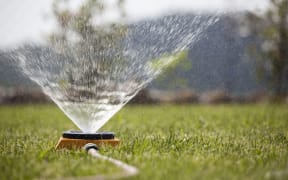
Work being done on a broken pipe in Wellington CBD, which led to a water outage for at least 100 properties in the area in 2023. Photo: RNZ / Krystal Gibbens
The country's water services regulator says Wellington Water's actions over the next eight months will be critical to ensure the capital has enough drinking water.
But Taumata Arowai head of regulatory Steve Taylor says the Wellington metropolitan area may still face water restrictions next summer.
"We all share the same goal: ensuring the community has enough water to meet households' basic needs and that public health is not put at risk. It's essential that appropriate, incremental actions are taken over the next six to eight months to support this."
Taumata Arowai had put in place a regime of regular updates from the region's water supply agency - and its council owners - to better track Wellington Water's progress on reducing leaks and increasing the capacity of drinking water production.
But the progression to this point had not been a smooth one.
In a letter to Wellington Water and the region's council's in February, Taumata Arowai chief executive Allan Prangnell lambasted the looming threat of an acute water shortage over the last summer period.
Prangnell said - on the basis of information supplied to the regulator - they could not be confident Wellington Water's plans would be adequate to prevent a similar shortage from happening again.
He said Wellington Water's assertion the shortage came about due to changing climate conditions limiting source water availability, growing consumer demand and the amount of water lost through leaks was predictable and did not justify a move to emergency measures.
"None of these factors are rapidly emerging, unforeseeable, or exceptional. It is not viable - in our view - for the Wellington metropolitan drinking water supply to be operated so that the potential declaration of a drinking water emergency is seen as a regular part of summer water supply management.
"The use of emergency powers should be reserved for situations where extraordinary events occur, or factors affecting supply could not reasonably have been anticipated or modelled. That does not appear to be the case here."
The next month, Taylor blasted the council's joint response to Prangnell's request for a risk mitigation plan.
"The 15 March 2024 letter does not set out a plan that meets the expectations signalled. The information provided does not set out a robust, measurable plan that Wellington Water Limited and its owner councils can be held to account against."
This week, Taumata Arowai released details of an ongoing regime of updates agreed to by Wellington Water to keep the regulator on top of the regional supplier's measures to bolster the capital's drinking water supply.
"What we were looking for was a more concrete indication of the types of milestones, the plans, the works themselves that could be assessed as: are they making the difference that you would expect them to?" Taylor said.
"But more significantly, what impact will they have on total leak reduction targets and how do we monitor that and measure progress over time? So that in the event that those targets aren't being met we can course correct or do something different to ensure that risk is being actively managed."

Te Mārua Water Treatment Plant Photo: Supplied
Taylor said the updates would include monthly updates on efforts to reduce leakage in the network and increasing supply capacity via the Te Mārua plant, and a review of supply and demand modelling to better predict impacts weather and population effects on the region's water needs.
"It's only seven or eight months away until we're starting to get back into a risk period. It's important to look across all of those measures and focus action on the things that do make that difference to ensure that we're not in the same situation next year."
He was unable to speculate on how the agency would respond if it needed to step in, but said there were "a number of things that could be done" such as reducing water pressure or bringing forward efforts to increase drinking water production capacity at the region's Te Mārua Water Drinking Treatment Plant.
In March, RNZ reported the cost of upgrading the plant had nearly doubled to almost $90 million due to changes for addressing seismic risk, extra work that needed to be done on old equipment and inflation. Currently, the project was only set to be completed in March 2025.
Taylor said there was the potential to partially commission the plant ahead of schedule to bolster supply ahead of the summer months.
Wellington Water head of regulatory services Charles Barker said they had been working closely with Taumata Arowai since notifying the regulator of the risk of acute water shortages last November.
He said additional funding to fix more leaks in the network had already had a positive impact on the water loss in the region, and their plan to reduce water loss and increase capacity had been accepted by Taumata Arowai.
"Together we have created an actionable, realistic plan that includes key measures including driving down water loss through additional investment in leak repairs and increasing supply by upgrading Te Mārua Drinking Water Treatment Plant. Our focus now is to deliver on that plan."






